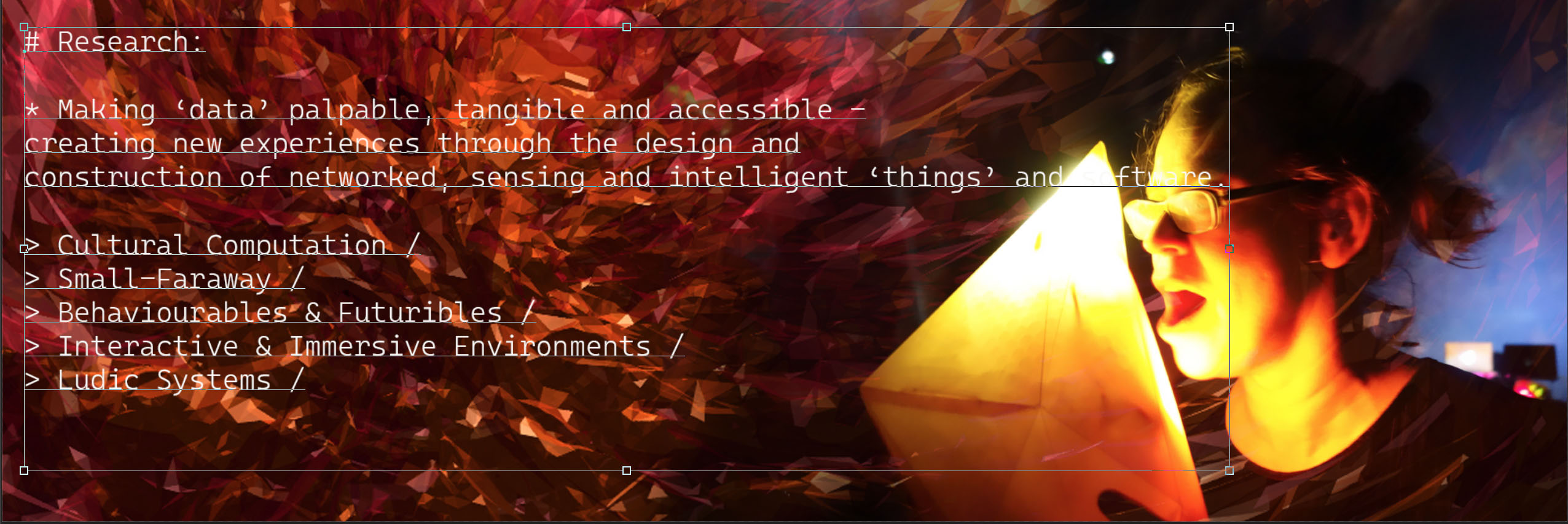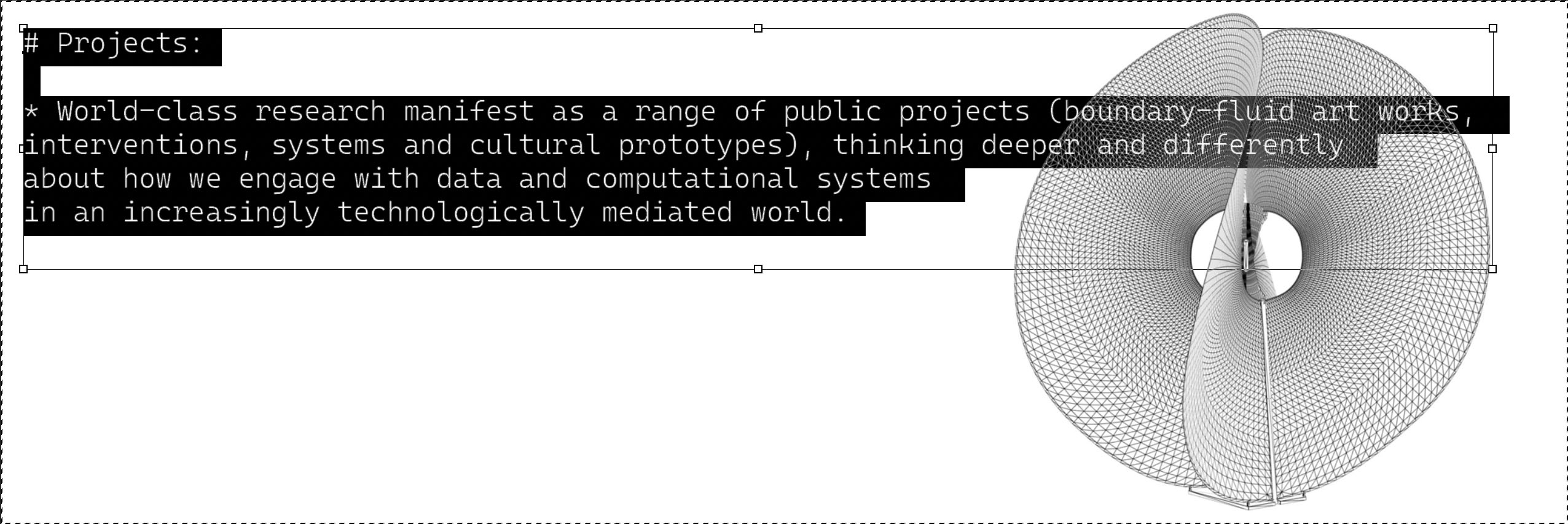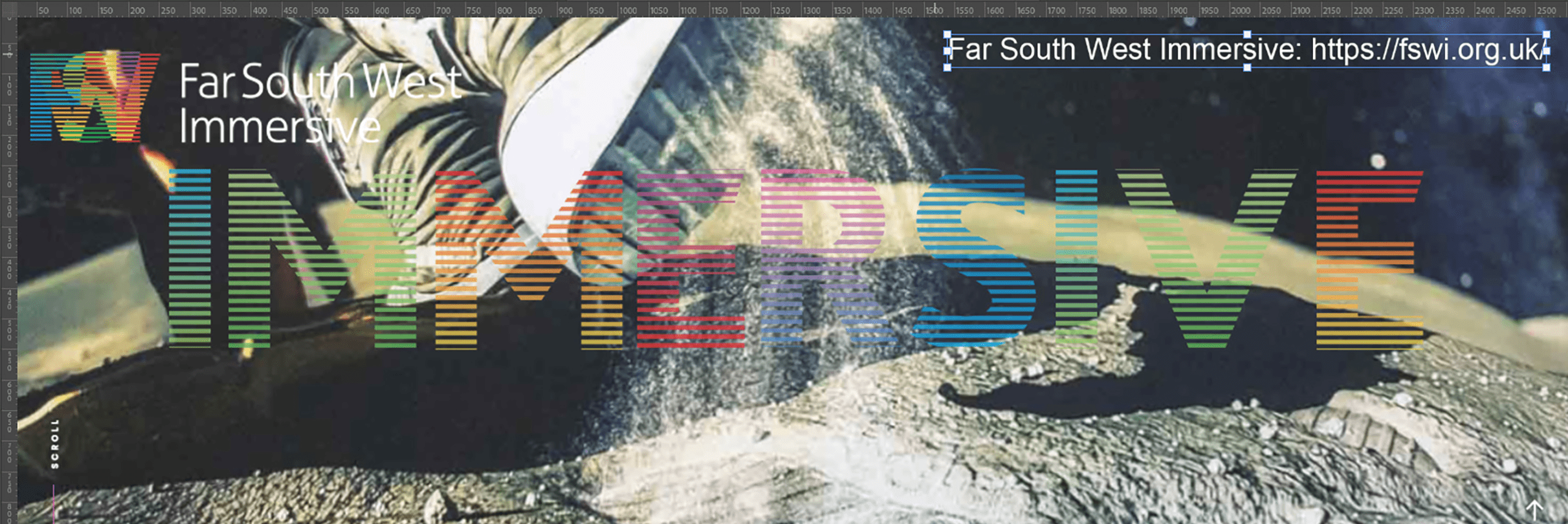Two reports produced by i-DAT following the completion of the Research Informed Teaching projects in April 2009.

1: Development of multi-disciplinary content for the Immersive Vision Theatre:
A: Final Report Enquiry-Based Teaching RiT.pdf
B: Appendix-A-C.pdf
C: AppendixD1-AHO+BARTLETT=i-DAT.pdf
D: AppendicD2-OutIn.pdf
2: Development of a Cross-Faculty Centre for Creative Design and Technology:
A: Final Report CCDT RiT.pdf
B: AppendixA-B.pdf
C: AppendixC-D.pdf
D: AppendixE1-SlidingScales.pdf
E: AppendixE2-RFID.pdf
F: AppendixE3-outin.pdf
G: AppendixE4-AHO+BARTLETT=i-DAT.pdf
Introduction:
The original RiT bid was for a project in the area of ‘Enquiry-Based Teaching’ intended to impact upon the first year experience of BEng students. In the event, this proved difficult to implement against the background of the strategic review of the University and the development of a new Teaching and Learning strategy. Accordingly the money was used in another fast developing area of enquiry-based learning relevant to a number of disciplines, including engineering, namely the effective use of immersive content. This project was intended to capitalise on the Immersive Vision Theatre and to interface with the Centre for Creative Design and Technology, hence ensuring synergies and impact. The intent was to develop content for the newly outfitted Full Dome environment. The conversion of the William Day Planetarium from the traditional horizontal dome, circular seating and central Zeiss projector to a digital Immersive Vision Theatre was made possible through funding gained by the Experiential Learning CETL (Centre for Excellence in Teaching and Learning) coordinated by Dr Ruth Weaver. The ambition for the Immersive Vision Theatre (IVT) is to create a transdisciplinary instrument for the manifestation of material, immaterial and imaginary worlds, relevant to many disciplines.
The ‘Full Dome’ architecture now houses a powerful high-resolution projector fitted with a ‘fish eye’ lens to wrap data, models, video and images around its inner surface. A second, even higher resolution ultra-high contrast projector focuses an intensely detailed ‘central’ (to the viewer) section of the dome. The 10-speaker spatialised audio system enables the modelling of acoustic environments as well as playback through virtual speakers, i.e. more speakers than physically exist. The IVT is being used for a range of activities, from cross-disciplinary teaching to cutting edge research in modelling and visualisation. 2: Development of a Cross-Faculty Centre for Creative Design and Technology.
Introduction:
Design, innovation and creativity are hallmarks of a significant part of the provision in Arts and Technology. Equally, creative technologies are very successfully being used to unlock transformative uses of visualisation, modelling and simulation which reach from undergraduate and postgraduate education through to research and into industrial and business practice. Particularly successful exemplars of this are seen in i-DAT (Institute for Digital Arts & Technology) and in INNOVATE (Centre for Creative Industries).
The area of creative design and technology has many strands existent in the two Faculties of Arts and Technology, ranging from genetic and mimetic algorithms in engineering through a substantial body of 3D design and modelling in both Faculties, to creative arts of many types. This duplication of concepts and, often technology, exists in two different (but potentially closely linked) domains with different interpretive views of design processes. A massive opportunity exists for synergy between parts of these activities in a transformational trans-disciplinary way. Part of the excitement of this potential lies in the burgeoning career options in the area of creative design and technology and part in the transformational advances in ways of modelling, visualising and rendering in virtual reality that are offered in a synergetic collaborative partnership. It will be possible to develop an exciting new strand of degree programmes, perhaps commencing with a Masters programme (taken as either an MA or MSc) with international draw to embed leading research concepts. This can extend down to include the existing new developments such as DSGN143 (Integrated Systems Design) in UG taught programmes. The really novel part of this proposal is that as well as embedding the various forms of discipline research within the teaching of UG and PG programmes, there is an associated development of new transformational research areas and a synergy from the body of research and research methods in two different disciplines. Virtually by definition, the developments in research informed teaching will be cutting edge in themselves. The project was received funding for 3 years in the form of 50% support for a new lecturer position to lead integration in this area. The Faculties of Arts and Technology would each commit 25% of the cost, and guaranteed permanent employment for a successful appointee. The person would have a joint appointment in both Faculties to ensure that this activity remains straddling the interface, even though it is certain that some of the developments will be more heavily weighted towards one Faculty or the other.






You must be logged in to post a comment.